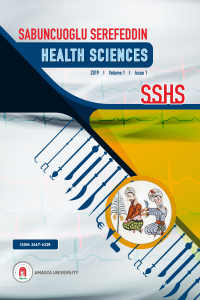In patients receiving spinal anesthesia, can homocysteine and C-reactive protein levels predict the development of postdural puncture headache?
In patients receiving spinal anesthesia, can homocysteine and C-reactive protein levels predict the development of postdural puncture headache?
Objectives: Postdural puncture headache (PDPH) is a complication that may arise following spinal anesthesia. We investigated whether homocysteine and C-reactive protein levels may be associated in the development of PDPH in patients that received spinal anesthesia.Materials and Methods: In order to determine homocysteine and C-reactive protein (CRP) levels, blood samples were taken from patients before and one day following spinal anesthesia. A total of 100 male patients were enrolled in the study. The mean age of the patients was 29 years old. Out of all the patients, a total of 6 developed headaches. The Mann-Whitney U-test was used to compare homocysteine and CRP levels between patients that did and did not develop headaches. Results: Homocysteine levels before and after the operation were higher in subjects that developed a headache as compared to patients that did not develop headaches (p<0.001). CRP levels did not differ significantly between patients with headaches and patients that did not experience them (p>0.05). Conclusions: High blood levels of homocysteine in patients with PDPH might be used as a biomarker so to predict the development of PDPH. However, future larger, multi-center studies are needed to further elucidate this association.
___
- Referans 1.Bedirli N, Akkaya T: Postspinal Başağrısı. Anestezi Dergisi. 2010:18(3):135-140
- ISSN: 2667-6338
- Başlangıç: 2019
- Yayıncı: Amasya Üniversitesi
Sayıdaki Diğer Makaleler
Simultaneous search of multiple groups of antibiotics and their different components in the honey
Namık BİLİCİ, Yılmaz ALTUNER, Erol KABİL, Hatice Kübra KOÇ TOPÇUOĞLU, Ümit TOPÇUOĞLU
Murat ŞAHİN, Kemal PEKER, Ali Seydi BOZKURT
